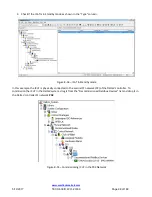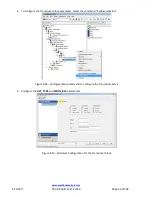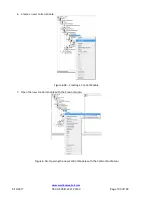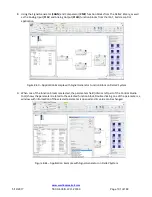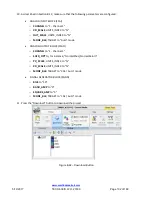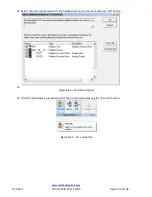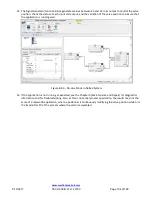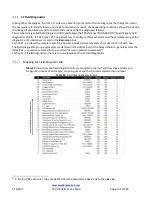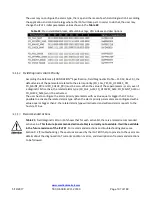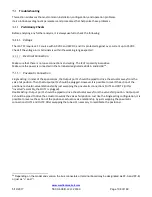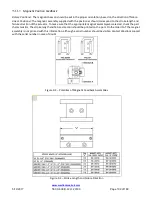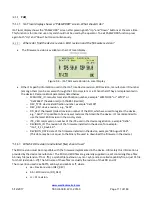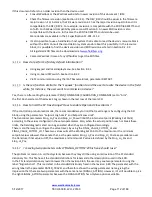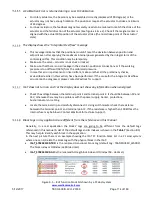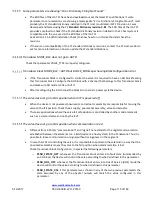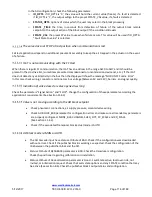
5/12/2017
TECH-538/D.W.O. 23160
Page 112 of 189
If this document refers to an older revision than the device used:
•
Consult Westlock or the Westlock website for newer revision of this document / IOM.
•
Check the firmware revision (see Section 9.2.2.2). The DEV_REV should be equal to the firmware
major revision. For instance, the Firmware revision 4.1 has the major revision equal to 4 and it is
compatible to the DEV_REV 4. For example, revision 4 is compatible with the EDD file 0401.ff5 and
so forth. For backward compatibility please consult Section 0. A newer EDD revision is also
compatible with the device. In this case the EDD file 0402.ff5 could also be used.
More details are available in the FF specification FF-901-FS 1.2.
•
It’s also possible to use a handheld or host system that is able to read the device’s resource block
without the EDD. Consult the Hand Held or system vendor about this possibility. In the resource
block, it is possible to find the device revision and EDD revision as stated in Section 9.2.2.2.
All registered EDD files can be downloaded at
•
Contact Westlock in case of any difficulties to get the EDD files.
How do I perform a factory default initialization?
•
Using keypad and local display menu. See Section 8.2.1.
•
Using on-board DIP switch. See Section 8.2.2.
•
Via FF communication using the ICoT Resource Block, parameter RESTART.
Is there a function similar to the “squawk” function to aid the user to locate the device in the field
while, for instance, the user want to commission a device?
Yes, there is. After setting the parameter PSNR_COMMANDS (CALIBRATION_COMMANDS) set to “Arm”,
the first 14 characters of the device’s tag is shown in the last row of the local LCD.
How to limit the SP travel range? How to enable Open and Close Alarms?
If the control loop is Automatic mode, the recommended way to limit the travel range is by configuring the AO
block, using the parameters “Setpoint High Limit” and Setpoint Low Limit”.
The transducer parameters Stop_Lo_Pos and Stop_Hi_Pos will limit the internal set point (Working Set Point)
according to the values configured in these two parameters. Also, when the actual position reach or break these
limits, the Field diagnostic alert can be generated when they are configured accordingly.
There is another way to configure the valve travel, by using the FINAL_VALUE_CUTOFF_HI and
FINAL_VALUE_CUTOFF_LO. These two values will set the Working Set Point to the maximum or the minimum
setpoint values allowed. Please note that, as the parameters Stop_Lo_Pos and Stop_Hi_Pos take precedence over
the transducer final value cutoff, the maximum and minimum SP value are defined by the Stop_Lo_Pos and
Stop_Hi_Pos.
I’m seeing two parameters called “SIGNAL_ACTION”. Which one should I use?
The problem is common in old host systems because they may still be using an old revision of the FF standard
dictionary file. This file has all the standard definitions for labels and other descriptions used in the EDD.
In the FF standard dictionary revision lower than the revision 3.80, the user may see two parameters using the
label: “Signal Action”. This is a defect in the standard dictionary fixed in the revision 3.80. The parameter with the
wrong label is the parameter RATED_TRAVEL and therefore shows the wrong parameter name, giving the
impression that there are two parameters with the same name (SIGNAL_ACTION). However, it’s still possible to pick
the right SIGNAL_ACTION parameter because the SIGNAL ACTION has only two options available.

